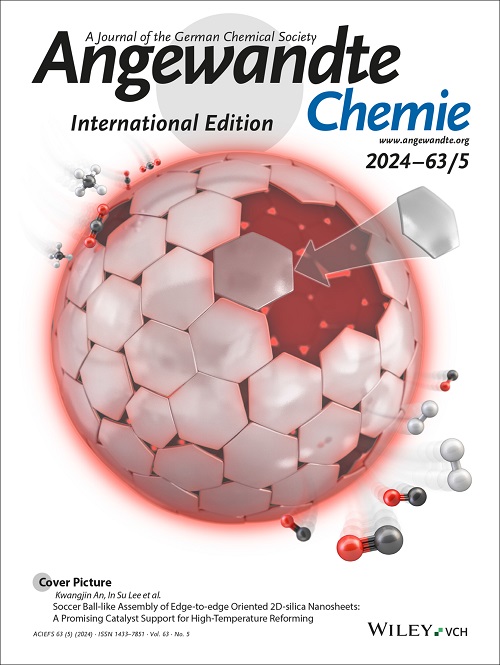IF 16.1
1区 化学
Q1 CHEMISTRY, MULTIDISCIPLINARY
引用次数: 0
摘要
在生物活性化合物中利用笼状碳氢化合物作为烷烃(尤其是苯基环)的生物异构体,可显著提高药效、溶解性和代谢稳定性。这些改进凸显了富含 C(sp3)的多环支架作为候选药物开发主题的潜力。然而,这种策略也增加了这些分子的结构复杂性,给控制笼状和高度装饰的生物活性支架的手性带来了合成挑战。在过去两年中,用于合成笼状碳氢化合物的催化不对称方法取得了显著进展,极大地推动了它们在手性药物发现和开发中的应用。本微型综述全面总结了手性笼烃催化不对称合成的最新突破,包括双环[n.1.1]烷烃、立方烷烃和相关的三维支架。此外,我们还重点介绍了对映体纯度高的笼状碳氢化合物在生物研究中的有趣应用。预计本微型综述将进一步推动这些具有医药价值的笼状碳氢化合物的对映选择性合成。本文章由计算机程序翻译,如有差异,请以英文原文为准。
Catalytic Asymmetric Synthesis of Chiral Caged Hydrocarbons as Arenes Bioisosteres
The utilization of caged hydrocarbons as bioisosteres for arenes, especially the phenyl ring, in bioactive compounds has resulted in significant enhancements in potency, solubility, and metabolic stability. These improvements highlight the potential of C(sp3)-rich polycyclic scaffolds as a promising motif for the development of drug candidates. However, this strategy has also increased the structural complexity of these molecules, posing synthetic challenges in controlling the chirality of caged and highly decorated bioactive scaffolds. Over the past two years, remarkable progress has been achieved in catalytic asymmetric methodologies for the synthesis of caged hydrocarbons, significantly advancing their utility in chiral drug discovery and development. This Minireview provides a comprehensive summary of recent breakthroughs in the catalytic asymmetric synthesis of chiral caged hydrocarbons, encompassing bicyclo[n.1.1]alkanes, cubanes, and related three-dimensional scaffolds. Additionally, we highlight the intriguing applications of enantiomerically pure caged hydrocarbons in biological studies. It is anticipated that this Minireview will inspire further advancements in the enantioselective synthesis of these pharmaceutically valuable caged hydrocarbons.
求助全文
通过发布文献求助,成功后即可免费获取论文全文。
去求助
来源期刊
CiteScore
26.60
自引率
6.60%
发文量
3549
审稿时长
1.5 months
期刊介绍:
Angewandte Chemie, a journal of the German Chemical Society (GDCh), maintains a leading position among scholarly journals in general chemistry with an impressive Impact Factor of 16.6 (2022 Journal Citation Reports, Clarivate, 2023). Published weekly in a reader-friendly format, it features new articles almost every day. Established in 1887, Angewandte Chemie is a prominent chemistry journal, offering a dynamic blend of Review-type articles, Highlights, Communications, and Research Articles on a weekly basis, making it unique in the field.

 求助内容:
求助内容: 应助结果提醒方式:
应助结果提醒方式:


